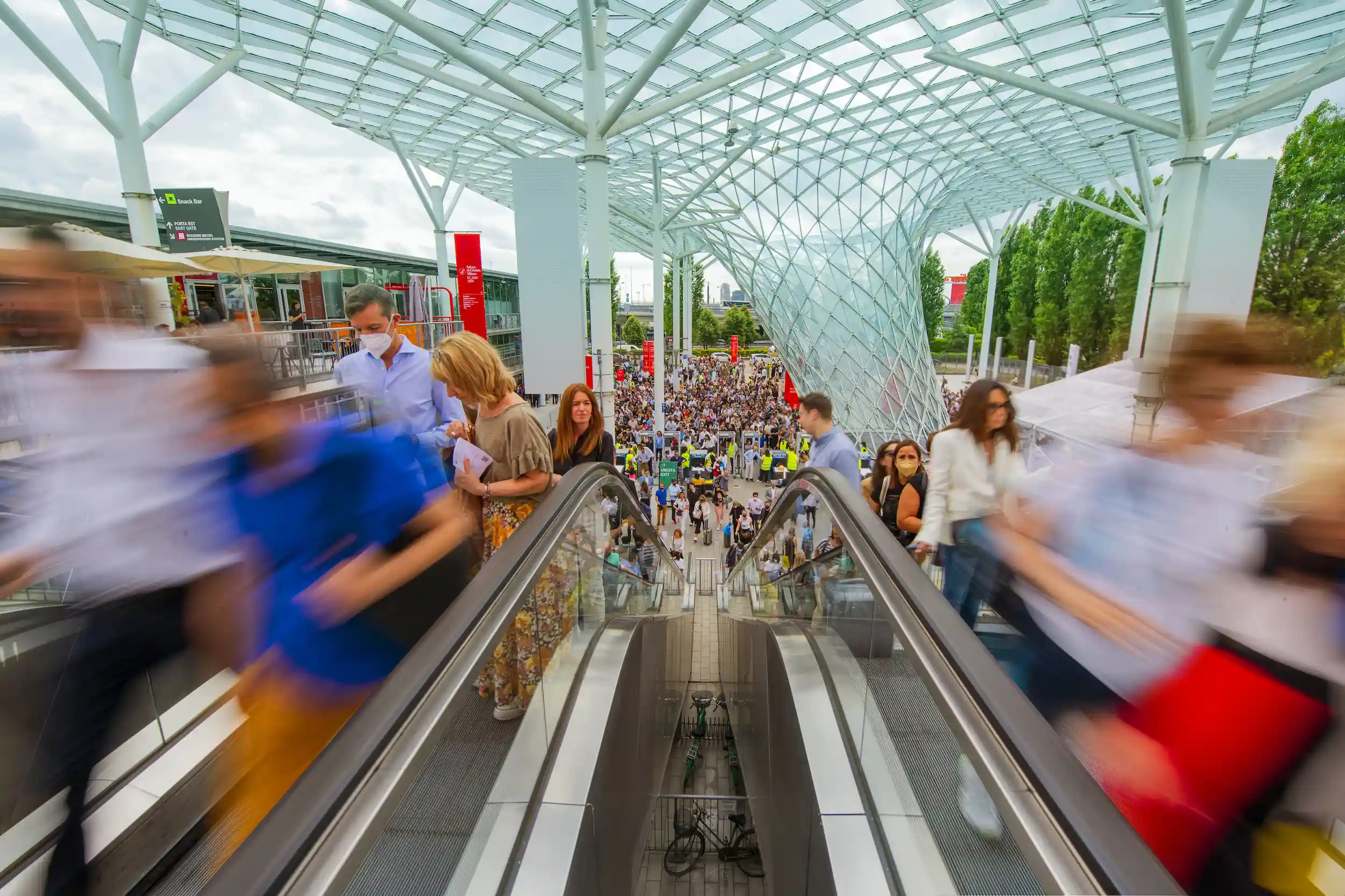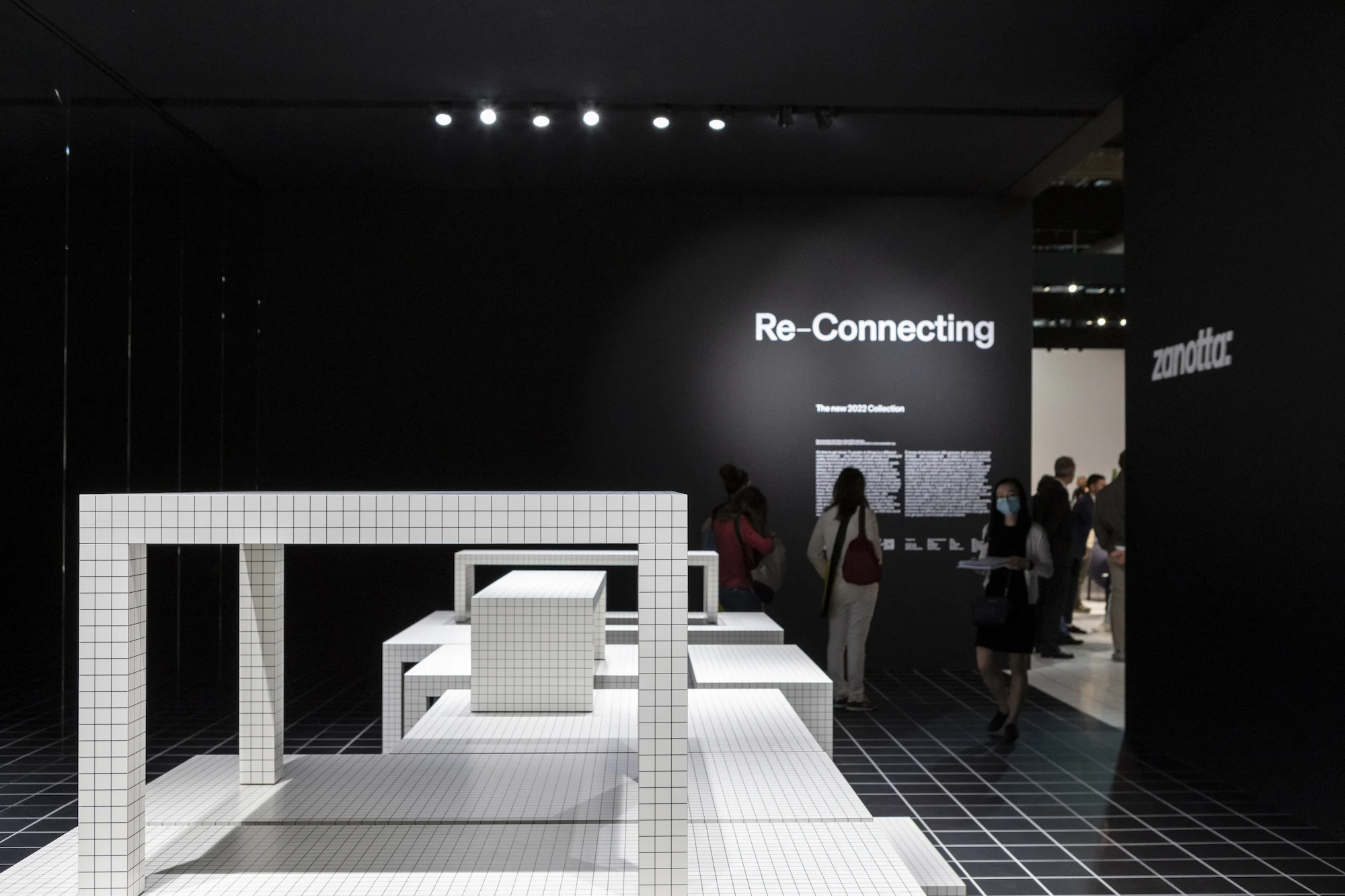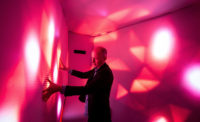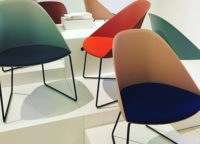Delayed due to Covid-19, the 60th edition of Milan’s mythic Salone del Mobile finally took place in early June. After cancellation in 2020 and a slimmed-down event in 2021, this milestone outing was back up to full fat, the number of exhibitors almost equaling 2019 figures. Though the Chinese stayed away due to draconian quarantine rules, and Russians were thin on the ground, Korea showed in force at the fair for the first time, and Indian exhibitors made the 4,000-mile trip. Nonetheless, attendance was lower than it might have been—260,000 visitors ventured out to Massimiliano Fuksas’s 10 million-square-foot Fiera Milano, compared to 380,000 in 2019.

Over 260,000 people attended this year’s Salone at the Fuksas-designed fairgrounds. Photo courtesy Salone del Mobile.Milano
But then there was plenty to do elsewhere in Milan, with a flourishing fuorisalone (off-fair) scene of talks, events, and exhibitions. The buzziest of these was the second iteration of Alcova, an alternative fair for emerging talent founded by design curators Valentina Ciuffi and Joseph Grima, set in the melancholy of a half-disused military hospital. Though sustainability was meant to be on everyone’s mind, you’d have had a hard time believing it at the official Salone, where the giant glossy stands formed pieces of architecture in their own right, packed with a suffocating surfeit of stuff.
Architecture and design are curious bedfellows, highly interdependent yet oddly siloed: few are the designers who attempt architecture, many are the architects who try design. Among them was Aldo Rossi, honored with a fuorisalone retrospective of his design work at the Museo del Novecento. Rossi monumentalized the rituals of everyday life in his wardrobes, coffee makers, and tea sets, even displaying the latter in a small domestic shrine shaped like a temple. But a temple to what? Bourgeois living? Capitalist accumulation? It was an ambiguous statement from an acknowledged Marxist.
Memphis—also honored with a Salone-timed retrospective, at the Triennale—did monumentality with wry irony, all paper-thin laminate and inflated dimensions. OMA, on the other hand, is far more ponderously ironic in the impressively monumental marble-veneered pieces the firm has developed with Dutch-Iranian stone company SolidNature, shown at Alcova. A giant closet/shelving unit in green marble and orange-veined onyx defies gravity by pivoting, while an equally oversize green-marble daybed with a cantilevering headboard takes the Existenzminimum to its Internet-age limit—a curious paradox, given that anyone with enough cash to pay for this object (at once bed, desk, and table) would surely prefer to buy that ultimate luxury: space. Meanwhile, over at the UniFor showroom, OMA unveiled a workspace collection that is far more traditionally functionalist, developed from the furnishings it designed for the 2018 Axel Springer headquarters in Berlin.

Italian furniture brand Zanotta augmented its 1972 Quaderna collection, designed by fabled Italian radicals Superstudio. Photo courtesy Salone del Mobile.Milano
Back at the official fair, among the John Pawson chairs (Passoni), Kengo Kuma rugs (Gandia Blasco), and BIG, Foster, and Herzog & De Meuron lighting (Artemide), monumentality was again on the menu at the Zanotta stand. Not only has the Italian brand augmented its 1972 Quaderna collection designed by fabled Italian radicals Superstudio, but the stand itself took the form of a life-size slice of Superstudio’s Continuous Monument, their dystopian celebration of Modernism’s universalizing tendencies. But, where Superstudio imagined object-free hippy nomadism in their plug-in white grid, Zanotta’s vision of our itinerant future is high-end aspirational Airbnb. Just as aspirational, though more rarefied, is the Peter Zumthor collection for Japanese brand Time & Style, developed over a period of 50 years—this is slow-food design, a paean to the intemporal. At Sawaya & Moroni, on the other hand, Chinese megafirm MAD unveiled two metal chairs whose accelerated retrofuturism will no doubt date very quickly. If your aspirations are more environmental, you might prefer the collaboration between Fornaci Brioni, Studio Plastique, and Snøhetta on Forite, a collection of tiling in mottled greens and blacks. Shown at Alcova, Forite is made using glass from discarded fridges, ovens, and microwaves. Though it’ll cost you more than classic tiles, it will leave you feeling ever so smugly virtuous.
Ironic monumentality was back at two other fuorisalone events. First, Dropcity—a new architecture center being developed by architect Andrea Caputo under the tracks behind Stazione Centrale—where Berlin-based American architect Sam Chermayeff showed his galvanized-steel Beasts collection. Hybrid pieces, these fanciful creatures merge domestic and highway furniture conventions—a coffee table with integrated overhead street lamp, for example, or a 5-foot-high ashtray. Meanwhile, Belgian design collective Zavantem Ateliers is attempting to replicate its Brussels production model at a disused print works belonging to the Necchi family (of Piero Portaluppi-villa fame) in Baranzate, five miles outside Milan. Beneath lithely elegant concrete vaults, their group show, intended to entice future investors, included enormous marble cushions by Ben Storms (part of his Ex Hale series) and Lionel Jadot’s Lost Highway, a dining set made from hefty chunks of asphalt dug up from a Brussels thoroughfare. You can’t get more “street” than that, and it’s responsibly recycled to boot!


















Post a comment to this article
Report Abusive Comment